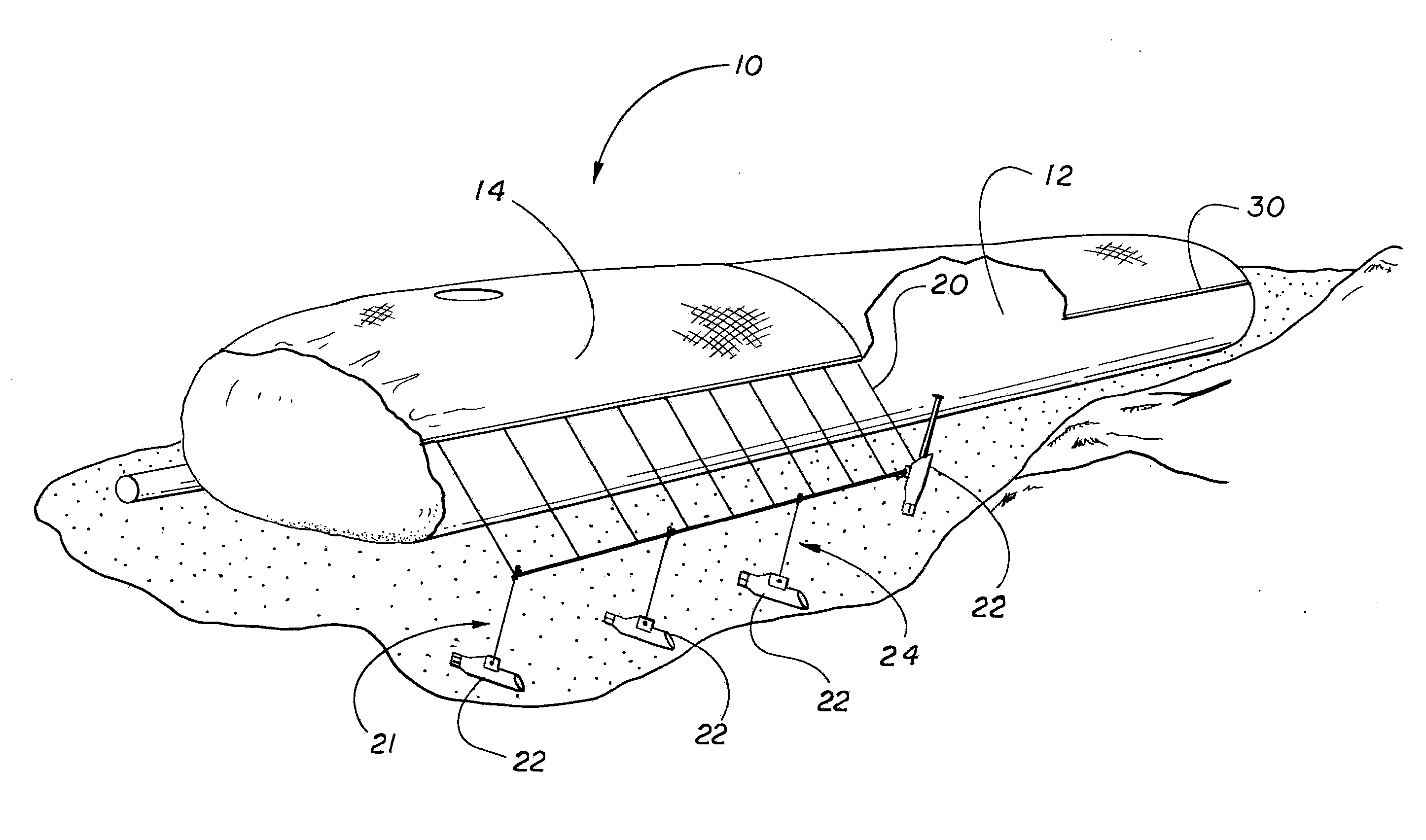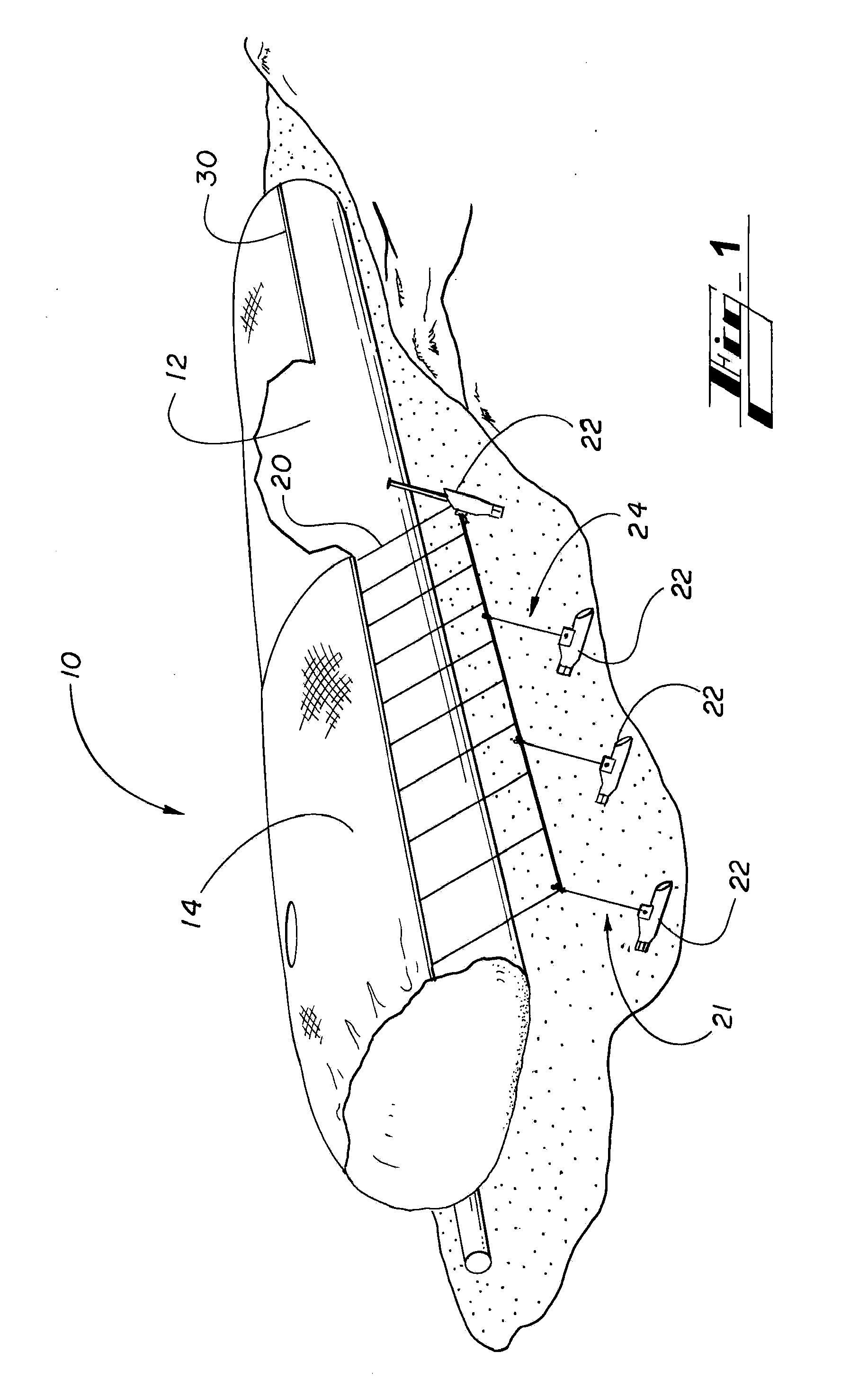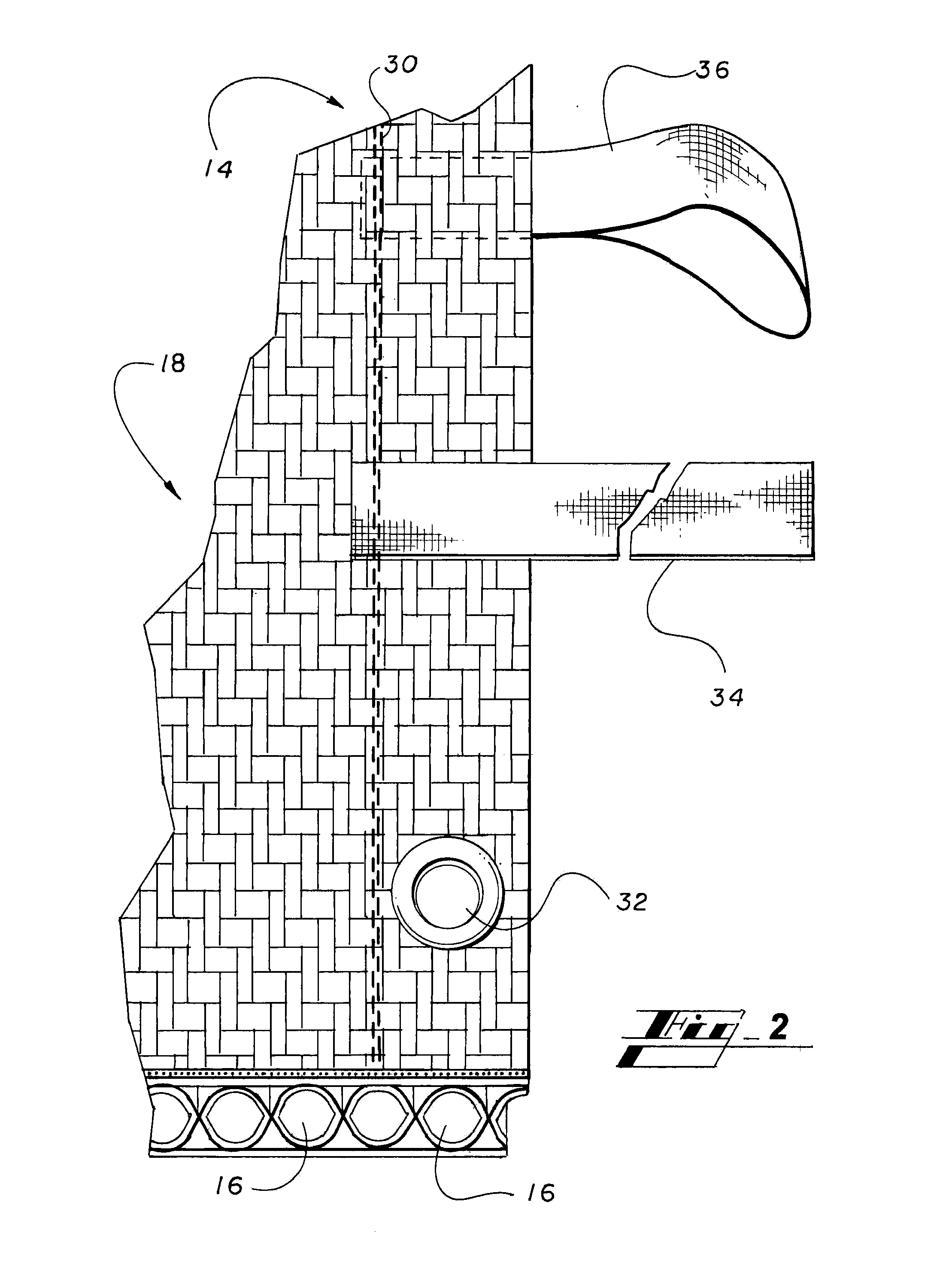Debris shield for geocontainers, method of making, and method of use thereof
a geocontainer and debris shield technology, applied in the field of geocontainers, can solve the problems of vandalism damage to the geocontainer,
- Summary
- Abstract
- Description
- Claims
- Application Information
AI Technical Summary
Benefits of technology
Problems solved by technology
Method used
Image
Examples
example
[0062]Impact tests were conducted in accordance with ASTM Standards E1886 and E1196. The results are reported in Table 1 below. 11 test units consisting of 21 inch×21 inch square bags, having the appearance of a pillow, respectively containing approximately 100 pounds of sand (volume of sand was 1 cubic foot) were tested. Units 5-7 and 10 employed a debris shield made in accordance with the above description.
[0063]All three-dimensional layers of the debris shield were a plain 4-layer tubular weave having a thickness of about 625 mils. In the warp direction, non-shrink yarn was 20 mil round polypropylene and the shrink yarn was a 315 denier low density polyethylene round monofilament. Fill yarn was 565 denier round monofilament polypropylene.
[0064]All bags employed in the impact test were formed of a woven fabric of 11,000 denier polypropylene fibrillated warp yarns twisted at 1.5 tpi and 4600 denier polypropylene fibrillated fill yarns. The weave was a 2 / 2 twill, 3 pick per shed hav...
PUM
| Property | Measurement | Unit |
|---|---|---|
| Fraction | aaaaa | aaaaa |
| Fraction | aaaaa | aaaaa |
| Fraction | aaaaa | aaaaa |
Abstract
Description
Claims
Application Information
 Login to View More
Login to View More - R&D
- Intellectual Property
- Life Sciences
- Materials
- Tech Scout
- Unparalleled Data Quality
- Higher Quality Content
- 60% Fewer Hallucinations
Browse by: Latest US Patents, China's latest patents, Technical Efficacy Thesaurus, Application Domain, Technology Topic, Popular Technical Reports.
© 2025 PatSnap. All rights reserved.Legal|Privacy policy|Modern Slavery Act Transparency Statement|Sitemap|About US| Contact US: help@patsnap.com



